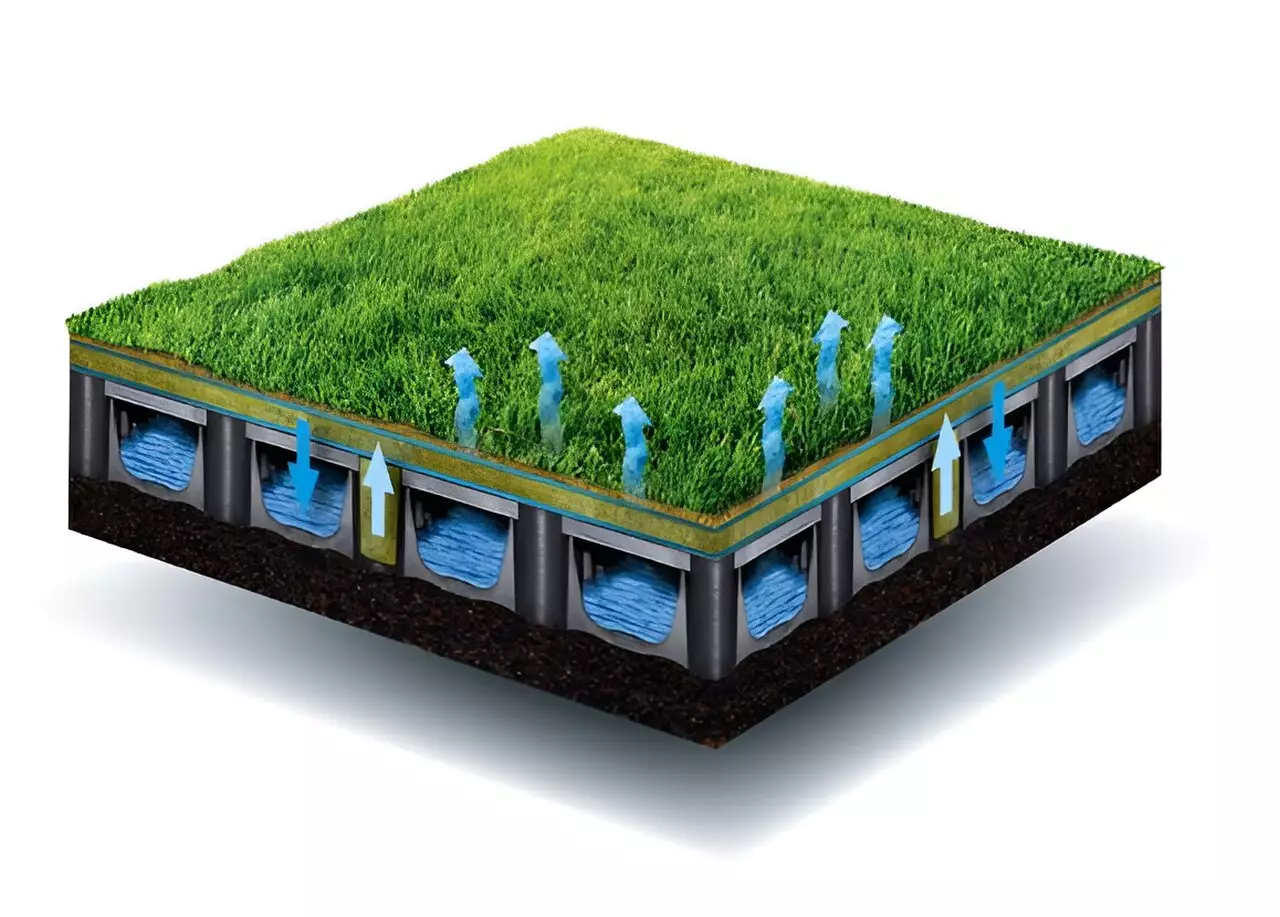In today’s urban landscape, the availability of space for outdoor sports activities is often limited. This has led to the widespread use of artificial turf in parks and public sports fields to accommodate heavy use. While artificial turf offers durability, it also comes with drawbacks for both individuals and the environment as a whole. However, researchers in the Netherlands are pioneering a new approach by incorporating a subsurface water storage and capillary irrigation system beneath artificial turf sports fields.
The newly developed system features a unique design that includes an open water storage layer directly under the artificial turf surface. This water storage system allows rainwater to be stored and then transported back up to the surface of the turf for evaporation. This process of evaporative cooling and capillary rise is naturally controlled by weather conditions, ensuring that water is only used when needed for cooling purposes.
The implementation of this subsurface water storage system has shown promising results in reducing surface temperatures on artificial turf fields. Traditional artificial turf fields can reach extreme temperatures of up to 70°C on sunny days, posing risks of burn injuries and heat-related illnesses. In contrast, the self-cooling turf system was able to maintain surface temperatures as low as 37°C on hot days, providing a safer and more comfortable playing surface.
In addition to the cooling benefits, the innovative turf system also offers environmental advantages. The system’s rainwater retention capacity helps reduce stormwater drainage, contributing to urban flood mitigation efforts. Moreover, the ability to add extra water directly into the system during dry periods ensures that the turf remains healthy and functional throughout the year.
While the cooling turf system offers numerous benefits, it does come with higher installation costs compared to traditional artificial turf. The researchers suggest conducting a comprehensive cost-benefit analysis to evaluate the long-term value of the investment. Further research is also needed to assess the system’s impact on surrounding areas and cities, as well as to optimize the design for different climates and storage capacities.
The integration of subsurface water storage and capillary irrigation systems in artificial turf sports fields represents a promising solution to address the limitations of traditional turf surfaces. By combining the durability of artificial turf with the cooling and environmental benefits of natural grass, this innovative system offers a sustainable and practical alternative for urban sports facilities. As research continues to explore the full potential of cooling turf, it is clear that this technology has the potential to enhance the quality of life for urban residents, especially children who rely on safe and accessible outdoor play spaces.


Leave a Reply